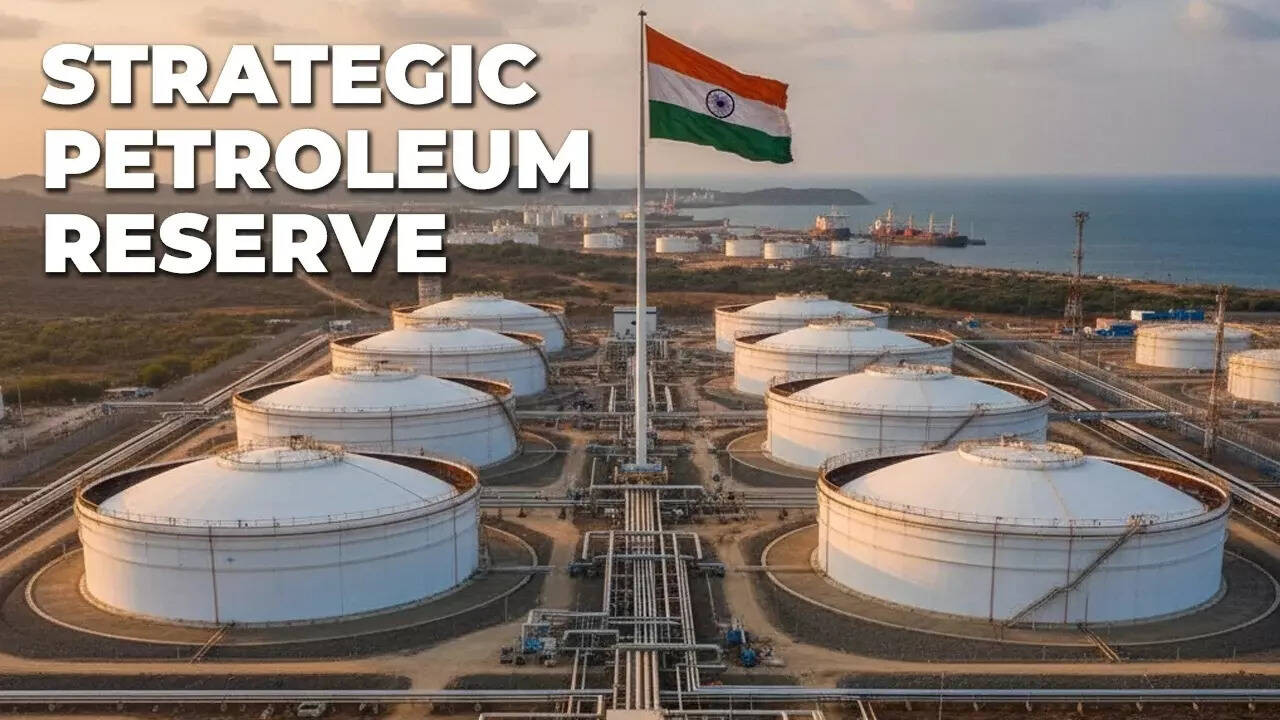Megha Engineering has secured a Rs 5,700 crore contract to build and manage India’s first private strategic petroleum reserve in Padur, Karnataka. This 2.5 MMT facility will significantly boost India’s energy security, supplementing the existing reserves.
India Takes a Giant Leap in Energy Security: Private Sector Joins the Strategic Petroleum Reserve Game
For years, the idea of a nation holding a strategic petroleum reserve felt like something out of a spy movie, a shadowy government operation ensuring a hidden supply of oil to weather any storm. But in India, that idea is taking on a new, dynamic form, and it involves the private sector in a big way. Buckle up, because this isn’t just about digging holes in the ground; it’s a strategic shift that could reshape India’s energy future.
The big news? Megha Engineering & Infrastructures Ltd. (MEIL) has snagged a massive ₹5,700 crore (that’s roughly $680 million USD) project to develop India’s first private sector strategic petroleum reserve (SPR). That’s right, a private company is now at the forefront of safeguarding India’s energy needs. It’s a game-changer.
Why a Strategic Petroleum Reserve, and Why Now?
Think of an SPR as the ultimate rainy-day fund for oil. In a world of geopolitical instability, fluctuating oil prices, and unforeseen supply disruptions (like, say, a major shipping lane blockage or a global pandemic), having a readily available stash of crude oil is crucial. It’s a buffer against price shocks, a safeguard for national security, and a guarantee of energy access for a rapidly growing economy like India.
India, already the world’s third-largest consumer of oil, relies heavily on imports to meet its energy demands. This dependence makes it vulnerable to global market volatility. Expanding the SPR capacity is a proactive move, a way for India to assert greater control over its energy destiny.

MEIL: From Infrastructure Giant to Energy Security Partner
MEIL, a company known for its massive infrastructure projects, is stepping into a new arena. The project involves constructing an underground rock cavern capable of storing a staggering 6.5 million barrels of crude oil at Padur in Karnataka. This isn’t just building another road or bridge; it’s creating a critical piece of national infrastructure, one that could have far-reaching consequences for India’s energy security.
The Padur facility will join India’s existing SPR network, which includes facilities at Visakhapatnam, Mangalore, and Padur (operated by Indian Strategic Petroleum Reserves Ltd – ISPRL). This expansion will significantly boost India’s ability to withstand supply disruptions and price volatility.
The Benefits Beyond Just Oil Reserves
The involvement of the private sector brings more than just capital and construction expertise to the table. It fosters innovation, efficiency, and a more dynamic approach to managing the strategic petroleum reserve. Private companies are often more agile and responsive to market changes, allowing for more effective inventory management and optimization.
Furthermore, this project is expected to generate significant employment opportunities in the region, boosting the local economy and providing a much-needed stimulus. The project is also likely to spur the development of related industries and services, creating a ripple effect of economic growth.
Challenges Ahead
Of course, a project of this scale and complexity is not without its challenges. Constructing underground rock caverns requires advanced engineering techniques and meticulous environmental safeguards. Coordination between the public and private sectors will be crucial to ensure the project stays on track and meets the highest standards of safety and environmental protection. The successful implementation will require careful planning, efficient execution, and ongoing monitoring.
A New Era for India’s Energy Strategy
This initiative marks a pivotal moment in India’s journey towards energy independence. By embracing private sector participation, India is not only expanding its strategic petroleum reserve capacity but also fostering a more resilient and dynamic energy ecosystem. It’s a bold move that could serve as a model for other developing nations seeking to enhance their energy security.
While this project boosts India’s energy independence, it also aligns with a broader strategy of diversifying energy sources and promoting renewable energy. You can read more about India’s push towards solar energy and its impact on energy security. The future of energy in India is undoubtedly multifaceted and exciting.
Ultimately, the success of the Padur SPR project hinges on collaboration, innovation, and a shared commitment to securing India’s energy future. It’s a crucial piece of the puzzle in ensuring that India can continue its economic growth trajectory without being held hostage by global energy market fluctuations.




